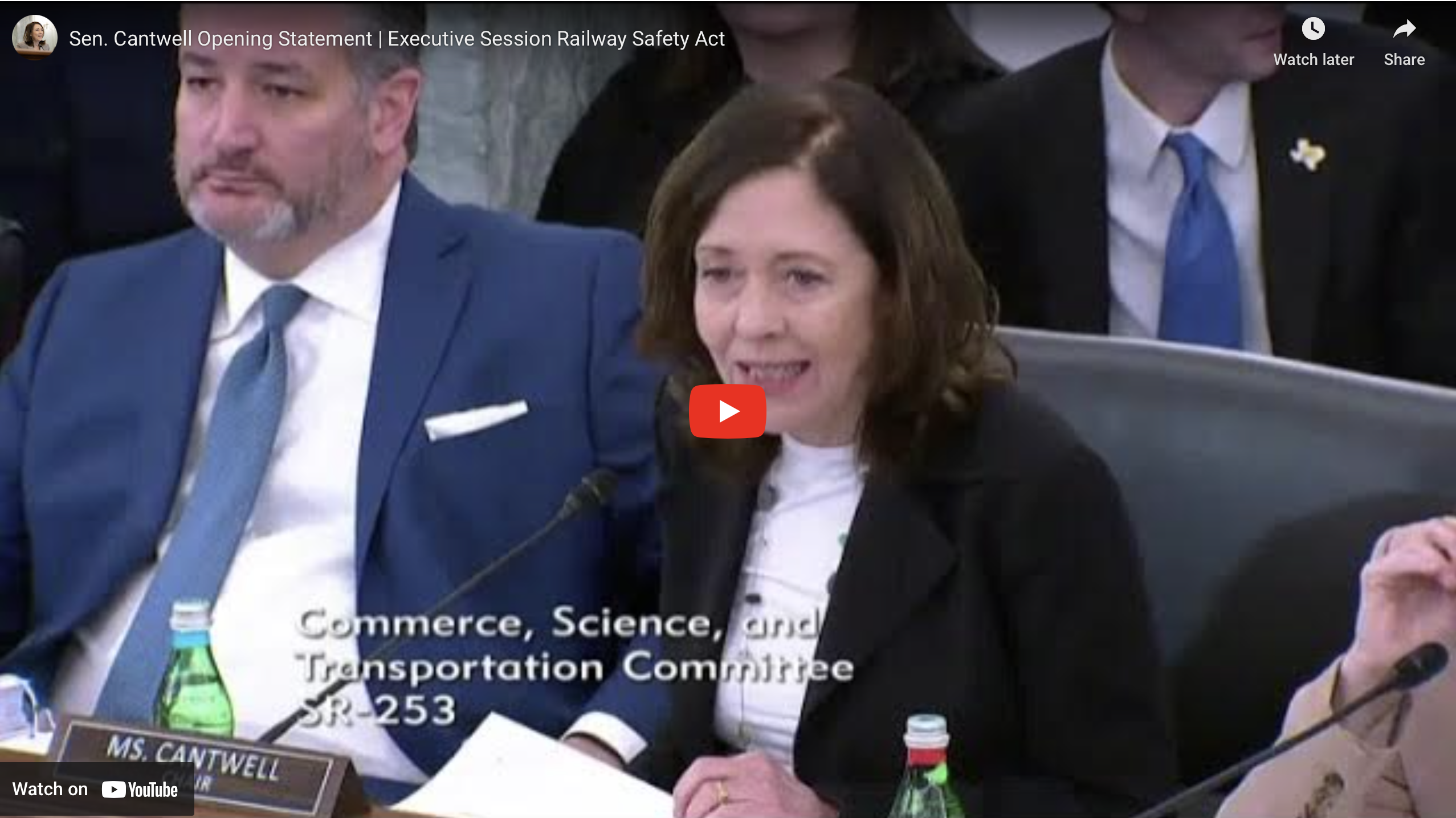
Rail Safety Act: Misguided Focus on HBDs
Written by Nicholas Little, Director Railway Education, Center for Railway Research and Education, Michigan State University Eli Broad College of Business
Senate Commerce Committee Chair Maria Cantwell (D-Wash.) reports S.576 out of committee.
The Rail Safety Act of 2023 (S.576) is deeply flawed in that it fails to even start to address the real safety issue, which is elimination of failures causing accidents. Trending of data from HBDs (hot bearing detectors)—not more HBDs deployed—is vital to eradicate accidents and derailments caused by overheated bearings. That will address the safety issue most comprehensively for all freight traffic.
Sensors on bearings (and other components that can fail with serious consequences) that relay continuous information to a central point (e.g., AAR’s Railinc) is the ultimate solution. Europe’s Digital Automatic Couplers project, though expensive, has the capability to provide such data to the head end and from there to the dispatching office or trouble desk—very much like the way modern aircraft engine monitoring is relayed to the pilot, airline and engine manufacturer. It’s technically possible but may be financially unjustifiable for the 1.3 million freight railcars in interchange service.
Yes, we do learn from every incident, accident or rare disaster on the railroads. We always have and always will. It’s part of railroading. Safety has exponentially improved during the past 200 years. Inspection has been the mantra globally. Manual inspection is neither cheap nor foolproof. Automated technological solutions tied with data analysis such as trending are helpful tools under development. But they alone will not eradicate safety problems.
We aren’t sitting back and doing nothing, as has been wrongly pointed out by some politicians and the general media. That has never been the railroads’ way. Being forced to do something that is poorly thought through and rushed into law through knee-jerk reactions has rarely worked in any industry. NTSB takes time to thoroughly study what happens in major accidents (air and rail) and carefully construes recommendation to either prevent a recurrence or reduce future impacts and consequences. Maybe the slow legislative process helps, but at times it doesn’t encourage or listen to expert advice.
A misguided focus on HBDs will do more long-term damage than good. An example: Even in low-traffic areas, HBD reports are frequently stood on by other radio messages. The right solution is integrating them with PTC/ATC and other control systems.
Editor’s Note: The Rail Safety Act is a politically motivated, unnecessary waste of time and resources. Period. — William C. Vantuono



